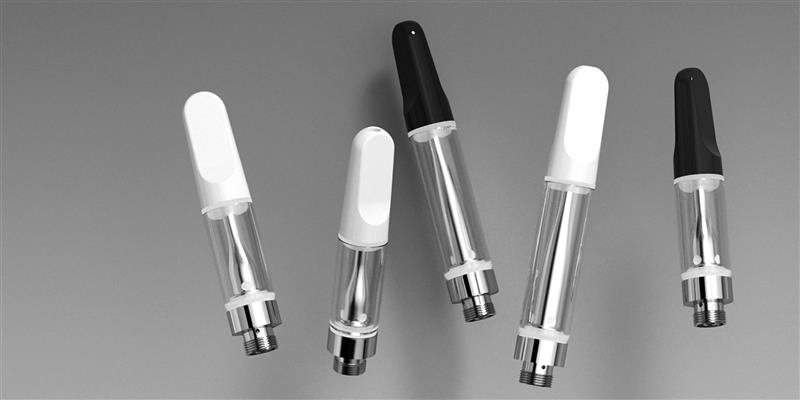Medical marijuana has been gaining a lot of attention these days, and for good reason. As more states in the U.S. adjust their laws to allow its use, many people are curious about just what medical marijuana can do. Is it a cure-all, or are there specific conditions it’s particularly good for? Let’s talk about what medical marijuana can help with and what it means for those looking for alternatives to traditional medicine.
In this article, we’ll dive into various aspects of medical marijuana, including its potential benefits, the specific conditions it may help manage, and how it compares to conventional treatments. We'll also explore the strains and products that might be the most effective for different needs. So, let’s get into it!
What Is Medical Marijuana?
At its core, medical marijuana refers to the use of the cannabis plant, or its extracts, to treat symptoms of illness and other conditions. The plant contains hundreds of different compounds, with THC (tetrahydrocannabinol) and CBD (cannabidiol) being the most well-known. THC is the compound responsible for the "high" that people associate with cannabis use, while CBD is non-psychoactive and has been widely studied for its potential therapeutic benefits.
Medical marijuana can be consumed in various forms, including oils, edibles, tinctures, and even topical creams. Each method of consumption has its pros and cons, and the right choice often depends on the condition being treated and personal preference. For instance, smoking or vaping provides fast relief, which might be ideal for acute pain, while edibles offer a longer-lasting effect, which could be beneficial for chronic conditions.
It’s important to note that while medical marijuana can be helpful, it doesn’t work the same way for everyone. Factors such as the individual's unique physiology, the strain of cannabis, and the method of consumption can all influence how effective it is.
Pain Management
One of the most common uses of medical marijuana is pain management. Chronic pain, which can stem from conditions like arthritis, migraines, fibromyalgia, and even cancer, can be debilitating. Traditional pain relief methods often involve opioids, which come with a high risk of addiction and other side effects.
Medical marijuana offers an alternative. Studies have shown that cannabis can reduce pain and inflammation, providing relief for those suffering from chronic pain. For instance, THC and CBD both interact with the body's endocannabinoid system, which plays a role in regulating pain and immune responses. This interaction can help dull pain signals, offering relief without the harsh side effects associated with opioids.
That said, while some people find medical marijuana incredibly effective for pain, others may not experience the same level of relief. It’s often a process of trial and error to find the right strain and dosage that works for a particular individual.
Anxiety and Depression
In the realm of mental health, anxiety and depression are two conditions that medical marijuana is frequently discussed in relation to. While traditional treatments include therapy and medications such as SSRIs, these can take time to work and may have side effects.
CBD, a compound in cannabis, has shown promise in reducing anxiety and improving mood. Unlike THC, CBD doesn't cause a high, making it a potential option for those who want the benefits of cannabis without the psychoactive effects. Some studies suggest CBD can help regulate serotonin levels in the brain, mimicking the effects of antidepressants.
However, it's important to approach this with caution. While some users report feeling calmer and more relaxed after using CBD, others may find that THC can exacerbate anxiety, particularly in high doses. It’s crucial for individuals to consult with a healthcare provider before using marijuana for anxiety or depression to ensure it's a safe option for them.
Epilepsy and Seizure Disorders
One of the most well-documented uses of medical marijuana is in the treatment of epilepsy and seizure disorders. In fact, the FDA has approved a CBD-based drug called Epidiolex specifically for treating certain types of epilepsy.
For some individuals, particularly children with severe forms of epilepsy like Dravet syndrome or Lennox-Gastaut syndrome, CBD has significantly reduced the frequency and severity of seizures. This is believed to be due to CBD's ability to modulate the electrical and chemical activity in the brain.
Parents and caregivers of children with epilepsy have reported life-changing results with CBD treatment. However, it's important to note that CBD is not a cure for epilepsy. It can help manage symptoms for many, but it doesn’t work for everyone. As always, any treatment should be discussed with a healthcare professional.
Multiple Sclerosis (MS)
Multiple sclerosis is a chronic condition that affects the central nervous system, leading to symptoms such as muscle spasms, pain, and fatigue. Medical marijuana, particularly strains high in CBD, has been shown to help with some of these symptoms.
For instance, cannabis is known to have muscle relaxant properties, which can help reduce the muscle stiffness and spasms associated with MS. Additionally, it may also help alleviate pain and improve sleep quality, which is often disrupted in MS patients.
Research on cannabis for MS is still ongoing, but many patients report improvements in their quality of life when using medical marijuana. As with other conditions, the effectiveness of cannabis can vary from person to person, and it’s important to find the right strain and form that work best.
Appetite Stimulation and Nausea
For individuals undergoing treatments like chemotherapy or those with conditions that affect appetite, medical marijuana can be a valuable tool. THC is known for its ability to stimulate appetite, often referred to as "the munchies," which can be particularly beneficial for cancer patients and those with HIV/AIDS.
In addition to stimulating appetite, cannabis can also help reduce nausea, a common side effect of chemotherapy and other treatments. This dual action makes it a powerful option for individuals struggling to maintain their weight and nutritional intake during illness.
While medical marijuana can provide relief for these symptoms, it's important for patients to work with their healthcare providers to ensure it's a suitable option for their specific situation.
Glaucoma
Glaucoma is a condition characterized by increased pressure in the eye, which can lead to vision loss if not managed effectively. Medical marijuana has been studied for its potential to reduce intraocular pressure, a key factor in glaucoma management.
THC, in particular, has been shown to lower intraocular pressure, offering temporary relief. However, the effects are short-lived, lasting only a few hours, which means frequent dosing would be necessary for continuous relief. This is not always practical or desirable for patients.
While medical marijuana may not be the most effective long-term treatment for glaucoma, it can be a useful adjunct for those who need additional help managing their symptoms. Patients should discuss with their eye specialist to determine if cannabis could be a beneficial part of their treatment plan.
Sleep Disorders
Many people struggle with sleep-related issues, whether it’s insomnia, sleep apnea, or other disorders. Medical marijuana, particularly strains with higher levels of CBD, has been found to help some individuals achieve better sleep quality.
CBD may help promote relaxation, reduce anxiety, and even alleviate pain, all of which can contribute to a better night's sleep. Some users find that a combination of THC and CBD works best, as THC can help regulate sleep cycles by decreasing the amount of time it takes to fall asleep.
However, it’s worth noting that while marijuana can help some people sleep, it might not be suitable for everyone. The effects can vary depending on the individual and the strain used, and as always, it's a good idea to talk to a healthcare provider about whether medical marijuana is a good option for sleep issues.
Potential Risks and Considerations
While medical marijuana offers many potential benefits, it's not without risks. Some people may experience side effects such as dizziness, dry mouth, or changes in appetite. There's also the risk of dependency, particularly with long-term use of high-THC products.
Moreover, marijuana can interact with other medications, which can lead to unforeseen complications. This makes it vital to consult with a healthcare provider before starting any new treatment with medical marijuana.
Legal considerations are also important. While medical marijuana is legal in many states, it’s still illegal at the federal level. This can create complications for patients traveling across state lines or for those living in states where it's not yet legalized.
Final Thoughts
Medical marijuana has shown promise in managing a variety of conditions, from chronic pain and epilepsy to anxiety and sleep disorders. While it's not a cure-all, it offers an alternative or complementary option for many patients looking for relief from their symptoms.
If you're considering medical marijuana, working with a knowledgeable healthcare provider is essential to determine the best approach. Additionally, Gamut's full spectrum packaging provider with over a decade of expertise in packaging for consumer goods can assist you with a broad range of packaging solutions to meet your needs. From design to delivery, Gamut covers the entire spectrum of packaging solutions, ensuring your products stand out in any market.



















